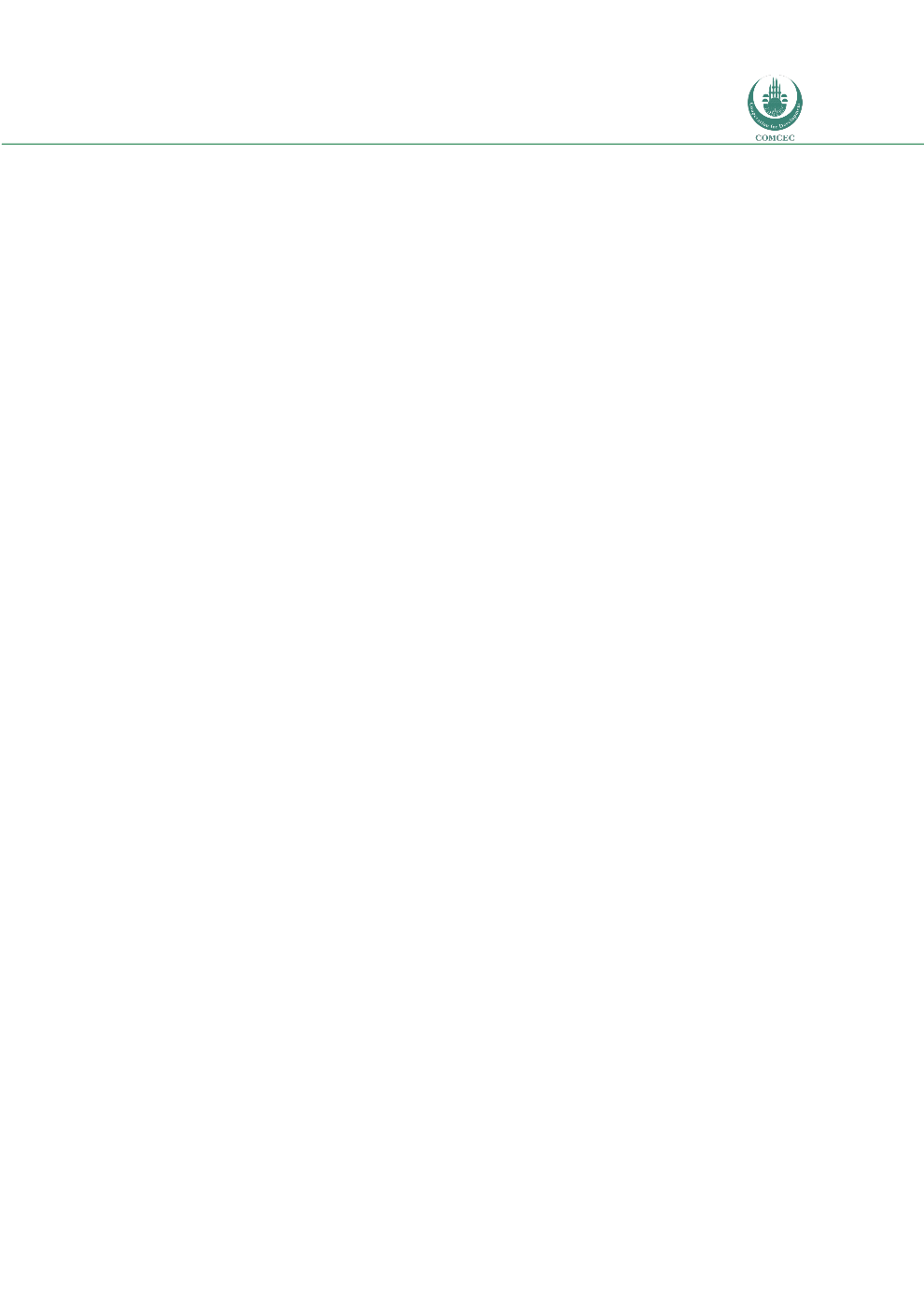

Risk Management in
Islamic Financial Instruments
67
4.3.2 Mena Region
For the analysis of the MENA Islamic banking sector, only the Islamic banks listed in the
BankScope database are considered. Such Islamic banks are domiciled in Bahrain, Egypt, Iran,
Iraq, Jordan, Kuwait, Lebanon, Morocco, Oman, Qatar, Saudi Arabia, Syria, Tunisia, United Arab
Emirates, West Bank and Gaza, Yemen. Based on data availability, 68 Islamic banks from the
mentioned 16 countries are selected for the analysis.
The sample includes 68 Islamic banks with an average asset size of 5,847.867 million USD and
average Total Deposit volume of 4,434.627 million USD. Islamic banks in the region have on
average 28.51 branches and 550 employees.
4.3.2.1 Risk Matrices
Asset Quality Ratios
For the MENA region, although the Average Loan Loss Res/Gross Loans ratio is higher for
Islamic banks, other asset quality ratios are lower. In general, Islamic banks hold a better loan
portfolio, compared to their conventional counterparts. Average Loan Loss Res/Gross Loans
ratio and average loan loss reserve over gross loan ratio for the Islamic banks are 7.69% and
9.78%, compared to that of their conventional counterparts of 3.21% and 16.05% respectively.
(See Chart 4.8)
Capital Adequacy Ratios
Higher capital adequacy ratios for the Islamic banks show that they keep higher equity
cushions to cover risk exposure and avoid the capital adequacy problem. All of the four capital
adequacy ratios are, on average, higher for the Islamic banks, compared to those of the
conventional banks. See Chart 4.6.
Operational Efficiency ratios
In general, higher operating ratios represent a lower cost of funds, higher efficiency, and
higher yields on equity and assets. The higher Net Interest Margins of the Islamic banks
represent cheaper sources of funding. Pre-Tax Op Inc / Avg Assets, Return On Avg Assets
(ROAA) and Return On Avg Equity (ROAE) are all higher for the Islamic banks. However, the
conventional banks pay out more dividends, around 16.74%, compared to 8.46% for Islamic
banks. See Chart 4.7.
Liquidity Ratios
Interbank Ratios of greater than 100 indicate the bank is a net lender, rather than a borrower,
and implies higher liquidity. Interbank ratios for the Islamic banks are marginally lower than
100, which indicate that the Islamic banks are generally borrowers in the interbank market,
whereas their conventional counterparts are lenders (See Chart 4.8). The higher Liquid Assets
/ Tot Dep & Bor ratios for the Islamic banks of 63.31%, compared to the conventional banks’
17.27% indicate that Islamic banks tend to hold more liquid assets in their portfolio.

















